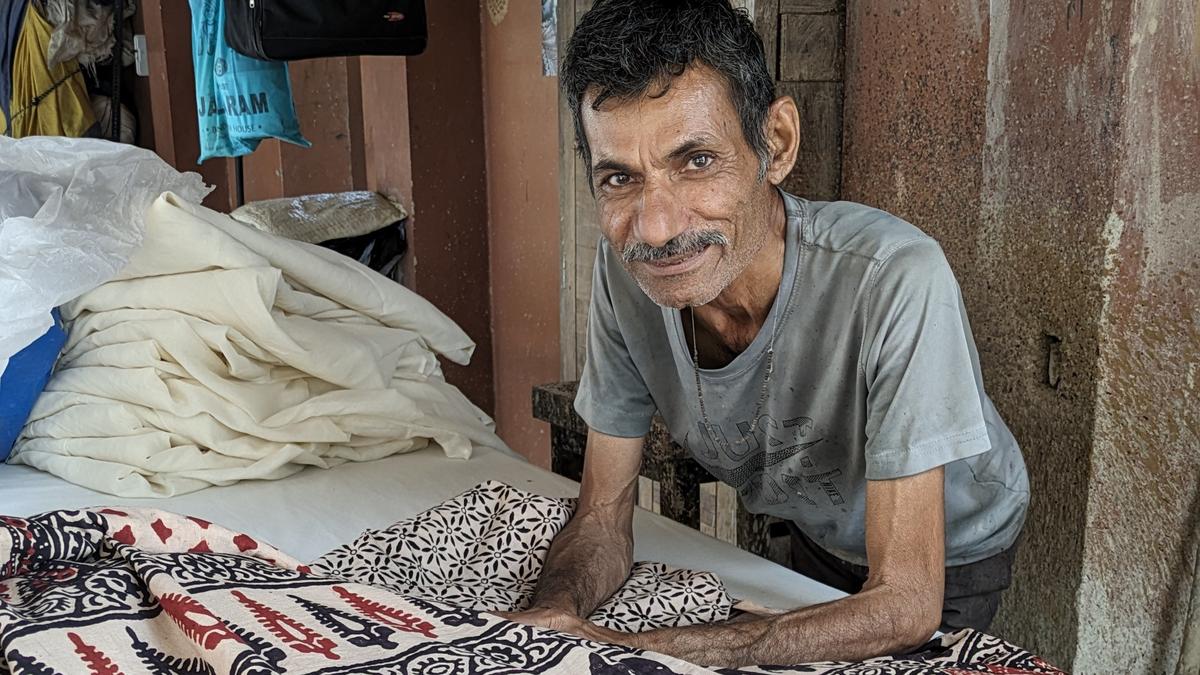
The last custodian of bela, a lesser-known craft of block printing from Kutch
The Hindu
Discover the fading art of bela block printing in Kutch, Gujarat, and the efforts to revive this endangered craft.
On April 30, ajrakh, the widely known craft of resist-dyeing from Kutch, got a Geographical Indication (GI) tag, a mark of authenticity that provides legal protection to arts from specific geographical regions. While this is cause for celebration, another lesser-known craft — bela block printing — from the same region, continues to languish in obscurity.
At one point in time, Bela, a village in the Rapar block of Kutch in Gujarat, was a flourishing hub for the block printing trade. In an undivided India, Bela would be teeming with traders and camel carts ferrying people between Kutch and Sindh in present-day Pakistan. For craftsmen practising bela block printing on textile, business was good. Things changed dramatically over the years, and today, there is a risk of the craft being lost altogether, but for the efforts of its sole custodian, Mansukh Pitambar Khatri.
Mansukhbhai, now in his late 50s, was just eight when he first learnt how to make graphic prints on cloth with organic colours and carved wooden blocks. As children, his elder brother and he would sit and watch their father hard at work. “All the members of the family would be involved in the printing processes — the washing, printing, dyeing,” he recalls. “I found it all very fascinating. How a plain piece of cloth would turn into something so beautiful. It was because of my interest that I learnt the craft.” Unfortunately, their father died when Mansukhbhai was still very young and so he turned to his brother to learn the nuances of the art form.
The beauty of bela printing lies in its bold designs. According to Mansukhbhai, while ajrakh is all about thin lines and mostly geometric or floral designs, bela involves thicker lines with motifs that include animals such as elephants and horses. “There is a difference in the process, too,” he says. “The resist that ajrakh uses is a mix of lime and gum; in bela we use mitti wax, a mix of mud and bajra flour. This paste is thick.”
Several factors contributed to bela’s decline, besides the border drawn between India and Pakistan and the slow drying up of the open trade route. Take the advent of power looms and screen printing, for instance. The traditional craftsmen stood no chance against the pace and price of these fabrics. “We had about 40-50 Khatri families involved in bela printing; now there is just mine,” says Mansukhbhai. “Moreover, at about 180 km from Bhuj, we are not at the centre of the tourist map. So tourism has not helped us like it has other craft forms closer by.” Most families earlier involved with bela printing, including Manuskhbhai’s relatives, have now turned to other businesses such as sweet-making.
Mansukhbhai too had abandoned this craft for a brief two-year period — his business with a select few traders did not suffice the family’s needs. Then around 2013, Khamir, an NGO that works on preserving local crafts, convinced him to take up the block once again. “We supported him in re-learning the dyeing process, taking up indigo dyeing, and introduced some new designs,” says Ghatit Laheru, director of the Gujarat-based Khamir. “Just before COVID-19 hit, he requested some space in Khamir itself to do his work, which we gladly obliged. Now he spends most of his time here, working on both old as well as new designs.” Slowly, Mansukhbhai’s work got the platform it needed, with a wider audience and a greater demand.
“I remember throwing sacks of wooden blocks into the Saran [river] because there was barely any work for us,” he recalls. Showing a block with the carved figurine of a woman and a tree, he says, “I did save some, like this one. It was made by my grandfather and is at least a 100 years old. Khamir made a longer replica of this so my work becomes faster.” Traditionally, the Khatris would make different designs for different communities. For instance, one community would wear prints with horse and horsemen, and another with elephants, and you could tell the community a person belongs to by the clothes they wore. Many of these designs now come together on saris, dupattas, and unstitched fabric— of horsemen, trees and elephants.











